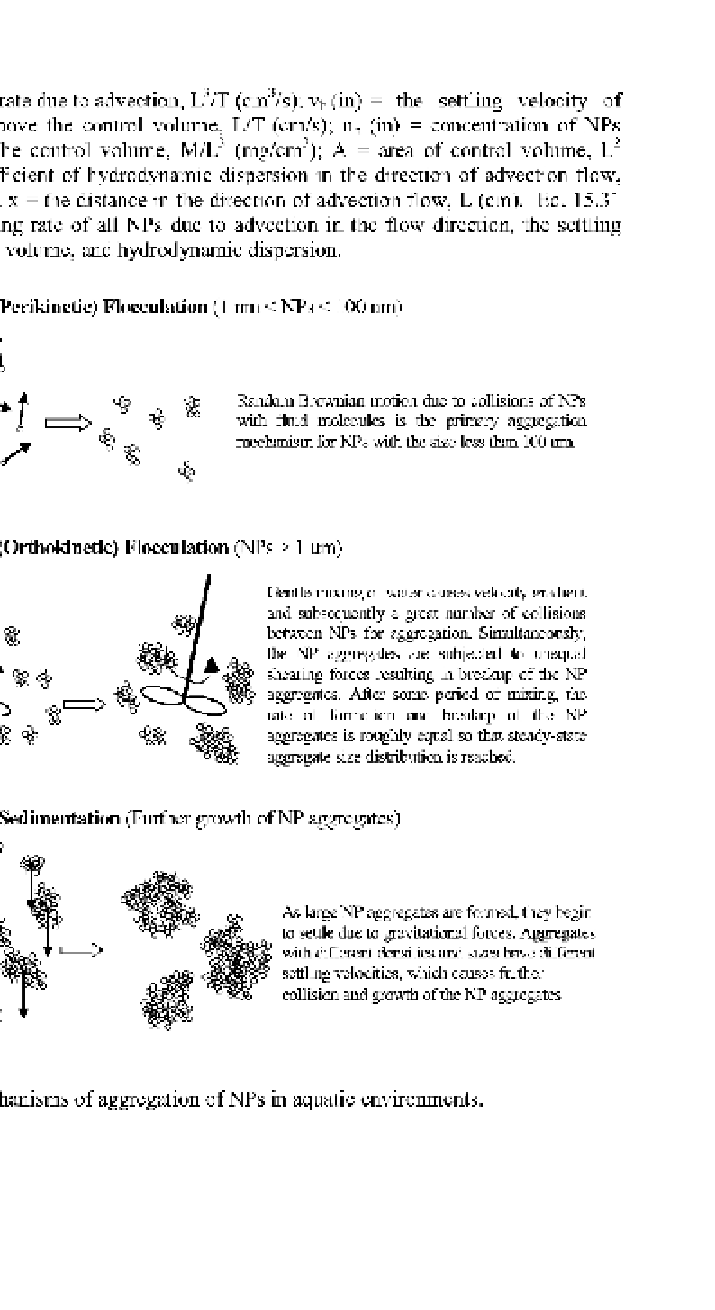Environmental Engineering Reference
In-Depth Information
where Q = flow rate due to advection, L
3
/T (cm
3
/s); vj, (in) = the settling velocity of
NPs of size h above the control volume, L/T (cm/s); nj, (in) = concentration of NPs
before entering the control volume, M/L
3
(mg/cm
3
); A = area of control volume, L
2
(cm ); Dh = coefficient of hydrodynamic dispersion in the direction of advection flow,
L /T (cm /s); and x = the distance in the direction of advection flow, L (cm). Eq. 15.31
is the mass loading rate of all NPs due to advection in the flow direction, the settling
above the control volume, and hydrodynamic dispersion.
Microscale (Perikinetic) Flocculation
(1
nm < NPs < 100
nm)
b
Random Brownian motion due to collisions of NPs
with fluid molecules is the primary aggregation
mechanism for NPs with the size less than 100 nm
Macroscale (Orthokinetic) Flocculation
(NPs > 1 pm)
Gentle mixing of water causes velocity gradient
and subsequently a great number of collisions
between NPs for aggregation. Simultaneously,
the NP aggregates are subjected to unequal
shearing forces resulting in breakup of the NP
aggregates. After some period of mixing, the
rate of formation and breakup of the NP
aggregates is roughly equal so that steady-state
aggregate size distribution is reached.
Differential Sedimentation
(Further growth of NP aggregates)
As large NP aggregates are formed, they begin
to settle due to gravitational forces. Aggregates
with different densities and sizes have different
settling velocities, which causes further
collision and growth of the NP aggregates
Figure 15.2
Mechanisms of aggregation of NPs in aquatic environments.

Search WWH ::

Custom Search